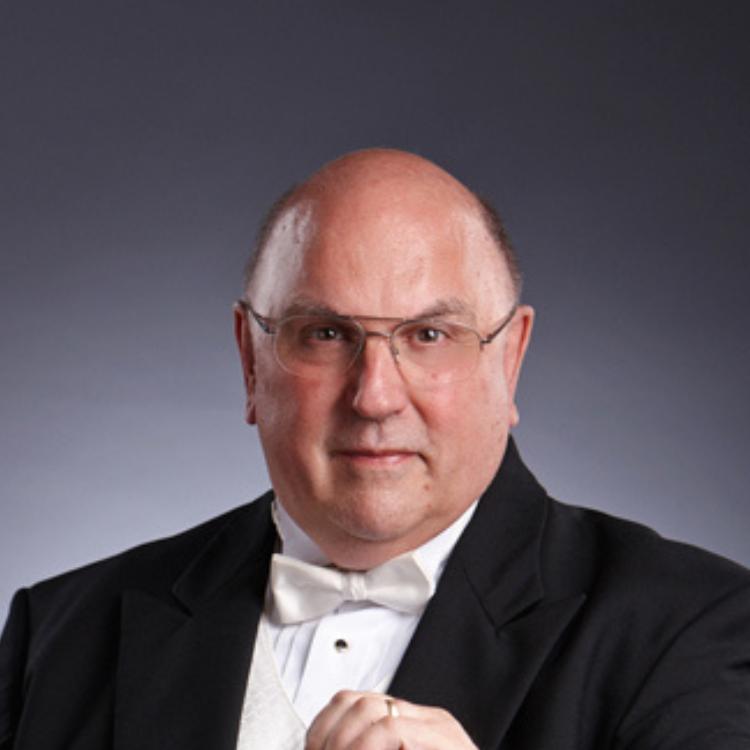Your cart is currently empty!

No. 10 – The Musical Legacy of Cane Ridge
The word “spiritual”, referring to a musical form, is so commonly used that one might question the need to say anything further. For those hoping to know a bit more about the origins of the African-American spiritual beyond what is in Installment No. 13, “The Port Royal Experiment”, a good starting place might be Dana Epstein’s Sinful Tunes and Spirituals, Black Folk Music to the Civil War (University of Illinois Press, 2003). That being said, one cannot hope to understand the musical legacy of the early 19th century campmeetings without acknowledging that there were two types of spirituals: the African-American and the White. The musicologist, George Pullen Jackson, was the first to identify a class of songs as “White spirituals” in his pioneering White Spirituals of the Southern Uplands (1933). Irving Lowens summarized Jackson’s findings, saying that White spiritual was “basically a secular folk tune which happens to be sung to a sacred text.” The African-American spiritual, in its purest form, could include melodic material from many sources also, but was far more improvisatory in how it was performed. I bring this up because it points to a mystery historians have been arguing about for a century: what if any relationship there may have been between White and Black spirituals, and what sort of assimilation between the two may have taken place at Cane Ridge ?
Throughout the 18th century there had been a constant push to expand to new territories. The size and diversity of this mass migration would be of historic proportions. Roads were choked with wagons, loaded to overflowing with families and supplies. Baptists, Methodists, and some Presbyterians with an evangelical bent, would exert the greatest influence in the spread of Christianity during these early years of frontier revivalism.
The Scots Presbyterians, many of whom were based in western North Carolina, brought with them the tradition of “Holy Fairs”. In the 16th century, the Protestant reformer John Knox, founder of the Presbyterian Church of Scotland, sought to distance his church from Catholicism. One way he did that was by re-imagining the Eucharist with lay participation in the breaking of bread and the sharing of wine. He also hoped to balance more equally the importance of the service of word, corporate prayer, and sacrament where the Eucharist had traditionally been predominant. The sacrament of communion would be celebrated as the climax of a four to seven-day “Communion Season” or Holy Fair, usually held in the summer months.
One is immediately struck with the similarity of Holy Fairs to American camp meetings. All the most prominent leaders of the Cane Ridge event were Presbyterian and had ties to North Carolina with its Scottish heritage. The central and western parts of the state had been the scene of revivalist activity since the 1790’s. Presbyterians took the lead in the great camp meetings at Gasper River and Cane Ridge, Kentucky, and no doubt, had much to do with introducing the concept on the frontier. Two Presbyterian preachers, James McGready (1763 – 1817) and Barton Stone (1772 – 1844), are credited with organizing those gatherings.
In June of 1800, James McGready gathered his three congregations, those of the Gasper River, Muddy River, and Red River churches, a total of about 400 people, to conduct a communion season in the Scottish tradition. at the Red River Church. It was a four-day event culminating in the celebration of the Eucharist. Thirteen wagonloads of parishioners appeared for the gathering. Based upon its success, McGready scheduled a similar event in July at the Gasper River Church. This time, an enormous crowd appeared: twenty-two wagons with hundreds more arriving on foot. Many brought camping gear while others slept in their wagons. Each day, there was continuous preaching from morning until dusk provided by McGready and two other prominent Presbyterian clergy, William Hodge and William McGee. McGready, Hodge, and McGee all had North Carolina connections. Pastor Barton Stone, who had been called to serve at the Cane Ridge and Concord (Ky) Presbyterian churches in the fall of 1798, attended the Gasper River revival. Disconsolate, he arrived there seeking a remedy for the listlessness and apathy he saw in his congregations. The Gasper River event was life-changing for Stone. “With astonishment did I hear men women and children declaring the wonderful works of God, and the glorious mysteries of the Gospel,” he wrote. “Their appeals were solemn, heart-penetrating, bold and free.” He returned home determined to stage a similar evangelistic awakening.
The Cane Ridge Revival of August 6 – 13, 1801, was probably the largest such event of the entire nineteenth century. It encompassed all of the most colorful aspects of the human condition, from examples of profound spirituality to revelations of scandalous excess. It spawned an ongoing debate played out in newspapers and periodicals between those who viewed Cane Ridge as the miraculous beginning of a New Jerusalem, and those who condemned it as sham and cheap grace bestowed on the unsophisticated and vulnerable.
During the first week of August 1801, masses descended upon the Cane Ridge Meeting House near Lexington, Kentucky for a week of evangelical preaching climaxing in the service of communion. It was estimated by militia policing the site that from twenty to thirty thousand people were in attendance within the seven-day period. Stone recalled in his memoirs that “The roads were literally crowded with wagons, carriages, horsemen and footmen… Many had come from Ohio and other distant parts.” Every aspect – the encampment set-up, the preaching, the bodily manifestations of worshippers in the throes of “enthusiasm”, and the music– was covered in detail in the press and written about by participants.
One of the striking things about the Cane Ridge Camp meeting was the breaking down, at least temporarily, of many barriers existing in American life and, in particular, the American church at that time. . Methodists, Baptists, and Presbyterians, all were temporarily united in the goal of evangelism. While the issue of slavery would rend the nation just a few short decades in the future, enslaved blacks attending the encampment were allowed “almost” equal participation. Charles Ferguson, who studied Cane Ridge and dozens of revivals afterward, wrote:
Among the first sights to catch the eye of a voluble observer at Cane Ridge was that of an assembly of Black people being exhorted by a man of their own color, some of whom appeared deeply convicted and others converted. There was room for all on the grounds under the stars. In both slaveholding and non-slaveholding states and territories, Blacks were allowed to attend the meetings, setting up their own camp behind the preacher’s rostrum.
In camp meeting parlance, singing was one of several activities referred to as “exercises”. It was not seen as a performance medium or as a pleasant entertainment to occupy the time, nor was it viewed as simply a way to inject variety into a long and intense period of worship and prayer. Rather, the revivalists saw singing as essential, if there was to be full physical, intellectual, and spiritual involvement of their hearers. Both the singing and its leadership had a spontaneity to it. It was led, depending on the situation by preacher, exhorter, or simply by someone in a group joined in prayer. None were professional musicians. The singing was likely almost always in unison and without instrumental accompaniment of any kind. There were no hymnals or songbooks. Leaders, if they had any resource at all, might have had a pocket “songster”. It was a little book with texts only containing material thought appropriate for revival use. Music chosen had to be easily and spontaneously communicated to a large gathering of people from far-flung places and differing experiences.
To lead such singing effectively some variation on the age-old call and response approach was required. Those already accustomed to the lining out of hymns and psalms in worship would have been already comfortable with it, and others could easily fall in behind them. Repetition was also essential. It facilitated quick learning, and with each repeat of a passage, the fervor of the singers was increased. Melodies were chosen on the fly from popular and folk melodies many in attendance would know. A leader would sing a stanza of a line or two. The melody would be familiar enough that some would join in. To maximize group participation, the person leading would often add an easily learned refrain or chorus at the end of each or selected stanzas. Among the hymns coming down to us from the camp meeting era are “On Jordan’s Stormy Bank” with its plaintive chorus, “I am Bound for the Promised Land” and “Blow Ye the Trumpet Blow”. The white spiritual we know as “What Wondrous Love Is This?” was ideally suited for camp meetings because it got its tune from folk song well known at the time, “The Ballad of Captain Kidd”. These are but a few of the hundreds of spiritual songs sung during the camp meeting era. We are fortunate to be able to study copies of some of the words-only “songsters” many a preacher carried in his saddle bag. Also there is the 1868 collection, The Revivalist, which contains the largest, text-only listing of camp meeting choruses from which the song leaders probably drew. What that music sounded like at Cane Ridge and the earliest camp meetings, however, cannot be known. Like the slave spirituals, the songs of the camp meeting were improvisatory and likely never sung the same way twice. Melodies we know and love were passed down and recorded second- or third-hand many years later. That being said, a repertoire of those songs would form the basis for another American musical tradition – shape note hymnody which will be the subject of a future installment.
Why then was Cane Ridge important? Its power and message for the church – and church musicians of the 21st century – is in the courage of its leaders to embrace diversity and minister to all in attendance. Musically, I think, we can learn by example from the revivalists’ creativity to find and utilize music ideally suited to the time, place, and witness needed. It is certainly important to recognize that the music was integral to the worship and not an interruption. A theme undergirding my book, Servanthood of Song, is that many of the successes, failures, and polarizations of Christian worship in the 21st century are rooted in our history. How can one not see the remarkable synchronicity between the music of the camp meetings and the striking success of the praise and worship movement of the late 1960s?
Best wishes and Peace,
Stan McDaniel

AUTHOR
Stan McDaniel
©2023 Stanley R. McDaniel, All Rights Reserved.
Copying or re-publication is expressly prohibited without direct permission of the author.


Leave a Reply